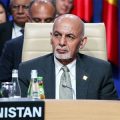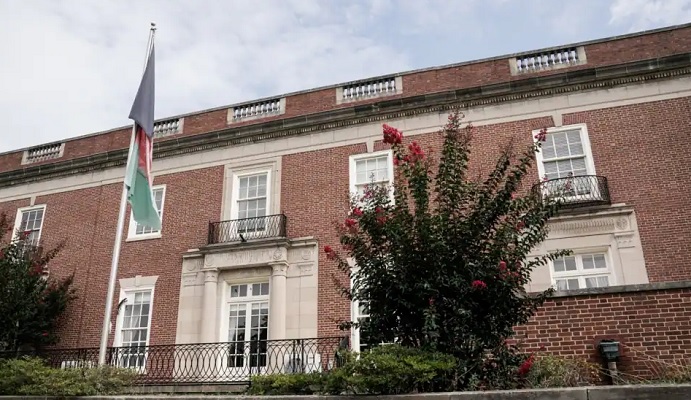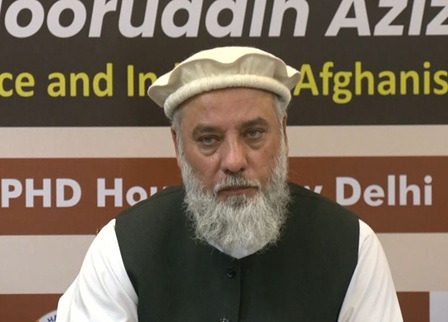
Popal Sameem
Written By: Popal Sameem
Afghanistan is the land of Afghans. It also known for other names such as “Aryana” in ancient times, “Khurasan” in the medieval ages and “Afghanistan” today, it is located in central Asia (Kakar, 1979). Afghanistan is completely land-locked, and it is bound on the north by the Union of Soviet Socialist Republics (USSR), on the west by Iran, on the east and south by Pakistan, and on the extreme north-east of the tip of Wakhan by the People’s Republic of China (Gregorian, 1969). Furthermore, Afghanistan occupies a total area of approximately 652,225 square kilometers, almost the same size as France; and roughly one-third of the area is mountainous, which is adding extra beauty and enriching its natural resources. Afghanistan is known for its variety of physical features, climate, inhabitants, languages, religious beliefs and ways of life (Rahimi, 1991).
Afghanistan has a very long history. However, the modern history of Afghanistan begins with the victorious uprising of 1919 of the people of Afghanistan against British colonialism, and the courageous campaign prior to that. It also had a deep influence on the region and on world affairs. The restoration of national independence in 1919 was the beginning of important social changes in the country. One of the features of the modern history of Afghanistan is the campaign towards the social freedom of the people of the country (C.S.O., 1983). The democratic republic of Afghanistan (DRA) was established in April 1978.
The present population of Afghanistan is consisting of diverse ethnic groups. These ethnic groups have become the current nation of Afghanistan. These ethnic groups include Pashtuns which are the majority in Afghanistan, Tajiks are the second largest ethnic group in Afghanistan followed by Hazaras, Uzbak, Turkmans, Nuristanis, Baluchis, Hindus, Sikhs, and other minorities. There are almost 32 different languages which are spoken by these ethnic groups in the country. Islam is the dominant religion in the country with 99%. Moreover, Afghanistan in its long history has experienced and has ruled by various dynasties, kingdom, and rulers.
War in Afghanistan
Afghanistan has been suffering from long war and instability. The landlocked and mountainous country suffered from war and conflicts during its modern history. The economy and the infrastructure Afghanistan are in ruins and millions of Afghans have died, millions wounded, and millions were forced to fly to other countries. Furthermore, the war in Afghanistan is the major conflict of the 21st Century. Afghanistan has suffered from various wars such as the Afghan Civil War, the Soviet Invasion, and the current war which began in 2001 in response to the September 11, 2001, terrorist attacks on the United States. There are multiple interconnected and interactive wars in Afghanistan.
The Soviet War in Afghanistan
Afghanistan it geopolitical terms is a strategic place and throughout its history, many wars were fought over the county by powerful nations. In the 19th century, the Russian and British empires fought for the control of Afghanistan. During these wars, million Afghans killed, two million driven from villages, and more than five million made refugees in Pakistan and Iran. In all half of the nation’s people dead, disabled, or uprooted (National Geographic, 1993). However, the Soviet Union was one of the most powerful and most feared nations in the world from the end of World War II until it collapsed in the early 1990s. The term of Soviet Union was the shortened phrase for the official name of the “Union of Soviet Socialist Republics (USSR). Furthermore, the Soviet Union was ruled by the Soviet Communist Party. This party comes to power in the Russian Revolution during World War I. Furthermore; the USSR invaded foreign nations in the name of socialist internationalism, prestige and with the objective to thwart their Western enemies.
The conflicts and trouble began with the family quarrel in 1973. Zahir Shah the last king of Afghanistan was overthrown by his first cousin and brother-in-law Muhammad Daoud Khan, who disbanded the monarchy and declared himself president. Mohammad Daoud seized power in a coup and declared a republic. Five years later Muhammad Daoud and his family were killed in a coup by the underground Afghan Communist Party. The People’s Democratic Party came to power but it was paralyzed by violent infighting and faces opposition by U.S.-backed Mujahidin groups. However, almost twenty-eight years ago, the Soviet Union withdraw its last troops from Afghanistan, ending its almost 10 years of involvement and occupation. At the end of December 1979, the Soviet Union sent 1155,000 troops into Afghanistan and immediately assumed complete military and political control of Kabul and other major cities of the country. Babrak Karmal, the exiled leader of the Parcham faction of the Marxist People’s Democratic Party of Afghanistan (PDPA) was installed as the new head of Afghanistan government.
When the Soviets invaded Afghanistan, however, they were facing strong resistance when they ventured out of their strongholds into the countryside. The resistance fighters were called Mujahidin and they fought against the Soviet Union troops. The Mujahidin proclaimed that it is jihad (Holy War) and they were supported by Islamic countries and the United States. The United States were delivering weapons and money to the Mujahidin and they were fighting against the Soviets. The U.S. provided economic and military assistance to the Mujahidin, supplying them with heavy weapons and providing military training to the Islamic Mujahidin groups. Even the U.S. gave shoulder-launched anti-aircraft missiles. These Stingers allowed the Mujahidin to shoot down Soviet planes and helicopters on the regular basis. The Soviets suffered a lot in Afghanistan and they were forced to leave the country. The remains of the war in Afghanistan have rendered the nation’s political institutions, economy and society fragile, and transformed Afghanistan into a battlefield for factional rivalries and a breeding ground for religious fundamentalism.
The new Soviet Union leader Mikhail Gorbachev decided it was the time to get out of Afghanistan. The Soviet forces stated withdrawing in 1988. The last Soviet soldier crossed the back across the border in 1989. In sum, these actions and wars in Afghanistan were U.S. collective attempt to make the Soviet adventure in Afghanistan as painful and brief as possible.
Afghan Civil War
The causes of the Civil War in Afghanistan can be divided into two conditions internal and external. Furthermore, during the last two decades, conflicts in Afghanistan have pulled this country into one of the most backward and poorest nations of the world. The conflicts arose in Afghanistan during the 1970s after the last king Zahir Shah was overthrown by Mohammad Daoud in 1973. He abolished the monarchy and proclaimed himself president of Afghanistan. At that time the followers of Zahir Shah and Islamic fundamentalists started struggles against president Dauod. From that time Afghanistan was into civil war.
After the Soviet Union withdrawal from Afghanistan in 1989 and the fall of Afghan Communist government in 1992, the Afghan Civil War rage on between the various factions of Anti-Communist Afghan fighter, who called themselves the Mujahidin. After Soviet troops departed from Afghanistan, not much changed in the country. The fighting between the Mujahidin even increased. After the Soviet left Afghan territory the war got more intensified. After the withdrawal of the Soviet troops from Afghanistan, the Najibullah regime survived for three years without the assistance and support from the USSR. After President Najibullah decided to transform the power into the Mujahidin, it would seem that now the war had come to an end, all the Mujahidin leaders proclaimed unanimously that they would establish peace and tranquillity. But the war got worse and the Mujahidin started wars between themselves. The country found itself divided into zones and groups, where the groups were managing the affairs in the country. The political and territorial integrity of Afghanistan was virtually shattered. General peace and stability remained a distant hope for the war-torn nation, as rival militias vied for influence, interethnic tensions flared, and the economy lay in chaos. The country was ruled by different mujahidin leaders and warlords. Every group had its own laws and rules. These groups were exacted road taxes and transit fees from trucks. They looted people’s properties and killed hundreds of civilians. They began to barrage the city with artillery and rockets. These conflicts and fighting between the groups continued intermittently over the next several years and the country slipped into chaos.
When the conflicts between the Mujahidin groups intensified and the opposition increased, a new force stepped onto the political scene in the form of the Taliban Islamic Movement which was also fighting for power. This group was led by a former Mujahidin commander Mohammad Omar and systematically seized control of the country. Mohammad Omar was best known for his displays of piety and participation in the fight against the Soviet occupation. The Taliban were able to take control of the greater parts of Afghanistan and they established their own institutions. The Taliban had stepped forward with the slogan that they want to clean the country from violence, murder, lawlessness, and the chaos. They fought against the Mujahidin groups and they set up the Shariah laws in the regions under their influence. The Taliban gained international attention when they were able to defeat those Mujahidin groups. Afghanistan at that time was divided into several autonomous areas and was controlled by diverse groups such as the Taliban, Masud, Dustom, Khalil etc. but Taliban was able to build its government. They took control over all Afghanistan except some regions. Later Pakistan, Saudi Arabia, and the United Arab Emirates recognized the Taliban government. But the Taliban movement was denied Afghanistan’s seat at the UN and came under vigorous international criticism for its extreme views. In 1998 U.S. launched missile strikes at suspected bases of militant Osama bin Laden, in Afghanistan and they accused him of bombing U.S. embassies in Africa. Also in 1999 UN imposed an air embargo and financial sanctions to force Afghanistan to hand over Osama bin Laden for trial.
Taliban in Afghanistan
Afghanistan has been in the state of the unstable situation for decades with the rival armed groups struggling for the control of power in Afghanistan. After the withdrawal of the Soviet troops from Afghanistan, the Afghan fighters Mujahidin stepped up their campaign and conflicts emerged between the Mujahidin groups for the control of the country but they were unable to unite the country. Furthermore, in the middle of 1990s, Afghanistan was in complete chaos and became divided into zones and various groups. These conflicts and divisions set the stage for the rise of the Taliban in the country and they seized control of Afghanistan in 1996. The Taliban emerged in the early 1990s in northern Pakistan following the withdrawal of the Soviet troops from Afghanistan. The Taliban was a predominantly Pashtun, Islamic fundamentalist group that ruled the country from 1996 until 2001. The movement was popular and got support from the people by promising to impose stability and rule of law after four years of conflict among the rival Mujahidin groups. Taliban entered Kandahar in November 1994 to pacify the crime-ridden southern city, and by September 1996 seized the capital, Kabul, from President Burhanuddin Rabbani, an ethnic Tajik whom they viewed as anti-Pashtun and corrupt. The Taliban regime controlled some 90 percent of the country before its 2001 overthrow.
Mullah Omar, a cleric, and veteran of the anti-Soviet resistance led Taliban ruled Afghanistan from 1996 to 2001 as Amir al-Muminin or the Commander of the Faithful. Pakistan was providing weapons, military training, and financial support to the Taliban. Pakistan along with Saudi Arabia and the United Arab Emirates (UAE) recognized the Taliban as the official government of Afghanistan. However, the attention of the world was drawn to the Taliban in Afghanistan following the attacks of the World Trade Centre in September 2001. Moreover, the Taliban in Afghanistan were accused of providing a sanctuary to al-Qaeda movement and Osama Bin Laden who were blamed for the attacks. Before that, they were also accused of various human rights and cultural abuses. In addition to that, after 9/11 the Taliban were driven from power in Afghanistan by the U.S-led coalition
U.S. Invasion of Afghanistan
The war in Afghanistan started on October 7, 2001. The United States and the United Kingdom, and the Afghan Unite Front (Northern Alliance) invaded Afghanistan in response to the September 11 attacks on the United States. They stated that they main goal of invading Afghanistan is to end and abolish the al-Qaeda terrorist organization in Afghanistan and also to remove the Taliban regime who were responsible for the sanctuary of Al-Qaeda in Afghanistan and create a viable democratic state. The U.S.-led coalition began attacks on the Taliban controlled Afghanistan with an intense bombing campaign by American and British forces. Furthermore, also support was provided by other nations including France, Germany, Australia, and Canada. In addition to that, later troops were provided by the anti-Taliban Northern Alliance rebels. The invasion of Afghanistan was to face and remove the terrorism and a response to the 0/11 terrorist attacks on New York and Washington, D.C. Furthermore, the invasion of Afghanistan was intended to target terrorist groups Osama Bin Laden’s organization which was based in the country and prevent attacks in the future as well the extreme fundamentalist Taliban government that has ruled most of the country since 1996 and supported and protected al-Qaeda. The US president George W Bush launched operation after the 9/11 to endure freedom in Afghanistan after the Taliban refuses to hand over the al-Qaeda leader Osama bin Laden.
About 9/11
On 11 September 2001 terrorists hijacked four airplanes in the United States. Two were flown into each of the Twin Towers of the World Trade Center in New York and another one hitting the Pentagon in Virginia. The fourth one crashed in a field in Pennsylvania (BBC). Furthermore, the total loss of life on 9/11 was nearly 3,000. The 19 hijackers were members of Al-Qaeda, the global terrorist network founded and led by Osama Bin Laden who was staying Afghanistan. The Taliban the ruling power in Afghanistan were blamed by the US for protecting Osama bin Laden the leader of al-Qaeda organization. After the 9/11 attacks, the US took military actions. On 7 October 2001 US-led Operation Enduring Freedom started in Afghanistan. The aim of Operation Enduring Freedom was to find Osama Bin Laden, remove the Taliban from power, and prevent the use of Afghanistan as a terrorist haven. The US was supported by a broad coalition of international forces including the Afghan Northern Alliance, United Kingdom, and Canada. The Taliban regime was removed in Afghanistan. They were excluded from the Bonn Agreement that formed a draft constitution for Afghanistan and in 2004 Hamid Karzai was elected as the country’s president.
After sometimes, the al-Qaeda and Taliban started to regroup in the rural areas especially in the border region between Afghanistan and Pakistan. They started to engage in guerilla-style warfare with the U.S. and Afghan troops. In these wars between the Taliban and American and coalition soldiers and thousands of Afghans have been killed and wounded in the fighting. Furthermore, the invasion of Afghanistan formally began in early October 2001 and resulted in a 13-year war that may have officially ended in December 2014, but still continues two years later with a variety of US combat personal still actively involved on the ground and in the air against the supposedly overthrown and defeated Taliban (BBC). The American war in Afghanistan is not in its 16th year, the longest war in American history. They the US failed to bring a stable government and peace to the country.
Lessons of War in Afghanistan
It is almost 16 years after the US invaded Afghanistan and it is the longest war in American history. As the US war in Afghanistan was officially ended in 2014 but still, the country is in the war. After more than 15 years of US troop’s presence in Afghanistan, the US new president Donald Trump announced a new strategy for Afghanistan, he stated the US will send more troops to Afghanistan. Currently, in Afghanistan, total 13,000 NATO troops are taking part in Afghanistan operation. Most of the troops are charged with overseeing and training Afghan forces. More than 15 years after Operation Enduring Freedom began; the Taliban is again making major gains in Afghanistan (CNN). With all the support of world troops and expenditures, the Afghan government and the US failed to bring peace into the country. The U.S. and its allies and the Afghan government face a challenging process of international military drawdown, transition in security, political, financial, and economic spheres. So what are the lessons that can be learned from the War in Afghanistan?
One of the lessons for the Afghanistan war is that the understanding of culture is very crucial and plays a very important role in solving conflicts and in major wars. The American take the Afghan culture for granted and they faced many problems in the regions. According to retired Gen. Richard Meyers who was the head of the U.S. Joint Chiefs of Staff at the time of the U.S. invasion of Afghanistan, he said that cultural issues also challenged the U.S. and its allies. “I think we have learned a lot about how culture plays a role in what we post-conflict, after major combat”. The further said that the U.S. government other governments, NATO for that matter in Afghanistan our understanding were pretty naïve at first. Furthermore, before invading a foreign nation the understanding of the environment is very important. One of the reasons that the U.S. faced and facing many challenges in Afghanistan was the misunderstanding of the culture and environment. It can be learned that before going to war or solving any conflict, the environment and the culture of the nation should be taken into consideration. In Afghanistan, many missteps have been made by the foreign troops and billions of dollars wasted on the schemes that had little chance of success. According to Major Andrew Rohrer, U.S. Army best defense debater on the Afghan war, what began as a punitive expedition became instead an enterprise to remodel Afghanistan into something safe to us, but entirely foreign to Afghans. It means that the U.S. big mistake was the misunderstanding of the Afghan values and culture. Mr. Rohrer added that to achieve our ends, we would have had to defeat the Taliban in such a way that they could not rejoin the discourse, and our transformation had to be compatible with Afghan cultural history, not ours. We failed because we did not understand Afghanistan.
Another lesson that can be learned from the Afghanistan war is that the U.S. and its allies should have supported and provided enough weapons to the local forces in Afghanistan. They should have trained the Afghan Security Forces before the missions were started. The training of Afghan security forces should be started the early stage before they hand over the security responsibility to the local forces. According to the NATO’s Secretary-General and others, they said that “Politically it’s much better to give the defense of a specific country to a local face than to deploy foreign troops for a very long time. Training activities are the main lessons learned from the Afghanistan war.
Other lessons that should be learned from the Afghan war are to fight and face the terrorist groups outside of a country’s borders. After the U.S. invasion of Afghanistan, the terrorist groups escaped to its borders and other countries. After the international operations in Afghanistan started, it can be clearly seen that Afghanistan is not anymore a safe haven for terrorists. They were supported and were given places in Pakistan. Their main bases were outside of the country and were funded and guarded from outside. So it is very important to pay attention to the neighbor countries.
Another lesson that is learned from the Afghanistan war is to build a strong local army and support them after the foreign troops leave the country. The U.S. and its allies shouldn’t spend money on unnecessary construction but if they would spend money on Afghan army now they wouldn’t face many challenges in Afghanistan. It has been a cornerstone of U.S. military policy in Afghanistan, as Afghan soldiers and police stand up, U.S. troops can stand down.
The U.S. went beyond it mission. The U.S. mission was to defeat the al-Qaeda and punish them what they have done to the U.S. When the U.S. accomplished their mission later they took their eyes off the mission and prolong the intervention. They claimed to rebuild Afghanistan and protect its people. According to former Sen. Chuck Hagel the chairman of the Atlantic Council, he said in NATO summit in Chicago that, and now 12 years later, we are not sure what our mission is, is our mission to eliminate the Taliban? And that was never our mission. Is it nation-building? Is it sending children to school? Is it building sewer systems? Is it going after al-Qaeda? The goals of wars have been determined politically and vary according to perceptions with the length of time and efforts. The U.S. goal was to defeat and dismantle the Al-Qaeda in Afghanistan and that goal has achieved early. However, the additional intervention and to reduce the Taliban insurgency, protect the Afghan people, and rebuild Afghanistan is linked to counterterrorism. It is very important to have clear strategies and policies for the mission and accomplish that mission and avoid further intervention. Also, develop a mission or plan a campaign based on the strategic framework. The framework should include all the necessary instruments of power and use the ways of diplomacy, interaction with the country trough diplomacy.






